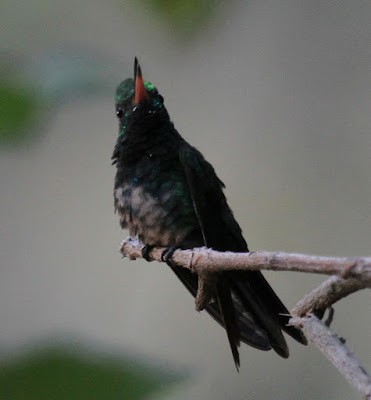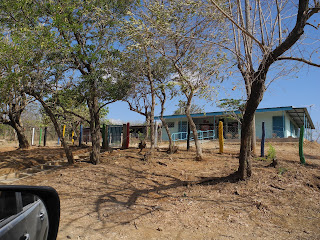After passport control, we picked up our bags from the carousel, and this time, to our relief, our bags made the journey with us. After piling the bags on a cart we proceeded to the customs area where we placed our bags on a conveyer belt that moved everything through a scanner.
"Is this your bag," the customs officer asked as soon as the bag emerged from the scanner.
"Yes," I replied.
He pointed to a security area and implied that I needed to take the bags to be checked by hand. A pleasant young woman opened the bags and as soon as she saw the medications, her look advised me that we were in trouble. I gave her the letter, in Spanish, that FIMRC provided to vouch for the charitable reason for the medical supplies.
The woman asked one superior, and then he asked another superior, and then I was advised that without the proper official documentation, I could not bring the meds into the country.
I brought out my laptop, found a wireless link in the airport, and with Google Translator, I explained that I was a Canadian paediatrician, and that I needed to leave for Las Salinas in the morning, and that the medications were needed for the clinic.
No go. Rules are rules. No ticket, no entry.
So, we left without the medications, but with a receipt, signed and stamped, that advised that if we can arrange the necessary documentation, we can retrieve the supplies.
The next morning, at the Hotel Intercontinental Managua, I emailed Anna, my FIMRC contact, and advised her about the problem. She promptly responded that she would do what she could.
We picked up our Toyota Prado (Land Cruiser in Canada) at the hotel, and again with the help of Google Translate, I learned why the expensive maximal insurance coverage on the last trip did not cover me for the $375.00 scrape on the fender I unknowingly suffered in the "secure" parking lot at the Hotel Colon in Granada on the last day of our March trip. Nothing is covered without an official police report. I'm not sure I would have tried to report a scrape to the police, even if I had known about the damage.
Well, I checked the Toyota very carefully this morning, and it occurs to me that I should have taken pictures with my digital camera to document the condition when I accepted the car. Next time.
We left the hotel for La Union, a supermercado, the Safeway or Sobeys, in Managua. We stocked up on produce, water, juice, and cooking supplies for the next 10 days, and packed everything in the Toyota.
Leaving the supermercado, I watched a white car turn left in a gap in a divided road and I presumed that I could make the turn as well. Bad move. Two policeman watched the white car drive by and then they pulled me over. I had made an illegal left turn. They saw me coming.
Neither of the two policemen spoke any English; why should they? I understood I had made a mistake and presumed the problem was an illegal left turn. There was a policeman at my window and another policeman at Karen's window. Karen's Spanish is much better than mine. Neither of us could follow the dialogue well, but when the policeman at my window, now holding my drivers license, demonstrated how he intended to put my license into an envelope and seal the envelope, I realized my license was going to be confiscated.
Ouch!
My heart rate picked up a few beats and I noticed that the air conditioning was not keeping my armpits dry.
I pulled out the FIMRC letter, written in Spanish, that described my work as a doctor, and which stated that I was delivering supplies to a clinic in Las Salinas. The policeman at my window visibly softened.
However, by then, the other policeman, at Karen's window, had pointed to a paper with $100.00 written on a line, an amount that was presumably the fine for our infraction.
"I think he wants money Dad."
I showed the other policeman the FIMRC paper but his demeanor did not soften.
I took out some bills and gave each of the policemen $10.00 US, and they sent us on our way with directions to Rivas. I'm old enough to remember when speeding tickets in Canada were about $25.00.
I am confident that both those young policemen will submit the money to the necessary authority as honest individuals who are interested to prosecute the law in an honest and ethical fashion. Well, maybe not.
The rest of our journey was much less exciting.
I was more relaxed on the crazy Nicaragua roads. Nothing like experience.






















































